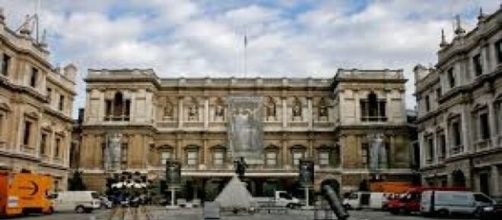This is a hard question to answer. Should a cash-poor museum sell off a rare treasure to keep its staff employed? Such is the dilemma facing the Royal Academy of Arts (RA) in London.
Sale of a $100 million artwork can save a lot of jobs
The treasure in question is the Michelangelo sculpture "The Taddei Tondo", notably the only work by the Old Master in all of England. Worth an estimated $100 million, marketing this artwork would save a reported 150 jobs. What to do.
Money may not be the only requisite for buying museum art
I’m not even going to try to answer that question.
But there is another aspect to the problem that I haven’t heard talked about yet and that I’m open to discussing. It goes like this: if the decision is to sell art to save jobs, to whom do you sell? Do you do it for anyone willing to pay the price?
Public art collection versus private collection
I favor a museum over a private collector. Michelangelo’s sculpture, described by British painter John Constable as “one of the most beautiful works of art in existence,” should be in a public collection for anyone to see.
Private patronage of the arts can benefit the public
Granted, private patronage of the arts has benefited the public in the past. I’m thinking of Solomon Guggenheim who turned his entire collection into a museum.
Philanthropic investment in art is a good thing. After all, Guggenheim made his stash available to the public, and it was something he didn’t have to do.
London’s cultural heritage is at stake
But private patronage can just as easily remain private. And art like “Virgin and Child with Infant St. John” could end up in someone’s bedroom.
Putting our cultural heritage in the protective custody of a museum makes it accessible. Putting this Renaissance relic in private hands denies the public its cultural heritage.
An old movie makes the point about cultural heritage
I keep thinking of Marlon Brando playing mafia boss Carmine Sabatini in the comedy film The Freshman (1990), who had Leonardo da Vinci’s original Mona Lisa all to himself over the fireplace in his living room.
Michelangelo’s sculpture was similarly held privately by Lady Margaret Beaumont. When she died in 1879, the work got public access at last at the Royal Academy.
The Royal Academy makes its thinking known
To the RA president’s credit, despite calls to sell Michelangelo’s sculpture to save jobs, Rebecca Salter resists. As the Museum Association reports, “The Royal Academy has ‘no intention’ of selling Michelangelo sculpture to save jobs.” The Guardian quotes Salter’s spokesperson saying that the museum has no intention of selling any work in its collection. “We have the privilege and responsibility of being custodians of extraordinary works of art.
It is our duty to look after our permanent collection, for current and future generations to enjoy.”
The Brooklyn Museum policy differs from the Royal Academy
Not every museum is as concerned. Next month, The Brooklyn Museum is putting up for auction 12 works from its permanent collection, including those by Lucas Cranach the Elder, Gustave Courbet, and Camille Corot. Last year, Brooklyn Museum unloaded Francis Bacon’s Pope. Who owns it now? The buyer’s identity has not been made public. It’s safe to assume the buyer was a private collector. Museums don’t hide their identity.


